Introducing the sailor’s life culture
The Kitamaebune Ship Museum displays a variety of materials related to the Kitamaebune.
Typical nautical equipment at the time included Japanese compasses and telescopes. Imagine how the sailors would check their direction of travel using a compass and look through a telescope and sail while keeping an eye on the mountains and land they could see from the ship. The chest of drawers for ships, used to store valuables, was also a necessity for sailing.
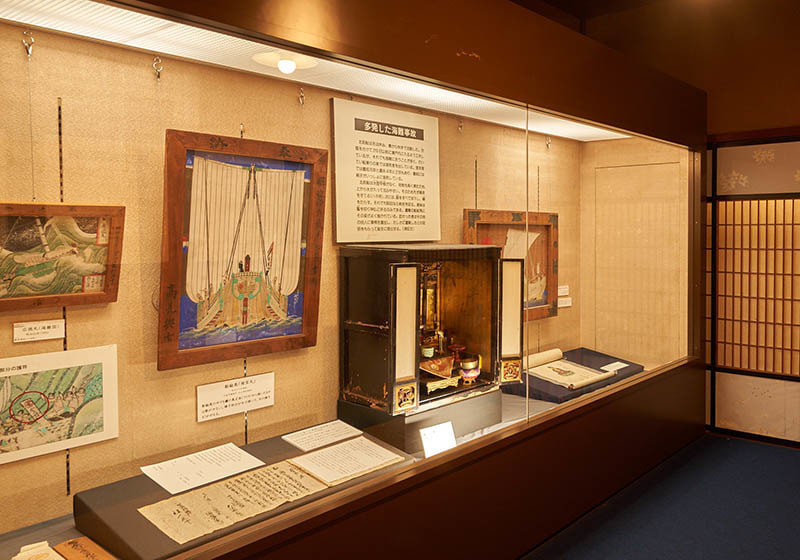
Kitamaebune and beliefs
The Kitamaebune ships were able to make huge profits if they successfully delivered goods. However, their voyages through the rough waves of the Sea of Japan carried the ever-present risk of being shipwrecked. There are also exhibits that convey the deep connection with the Kitamaebune and beliefs, such as the ship models and ema (wooden plaques) that the shipowners offered to the shrines and temples along with praying for a safe voyage, in addition to the Buddhist altars for ships, to which sailors said a prayer on board.
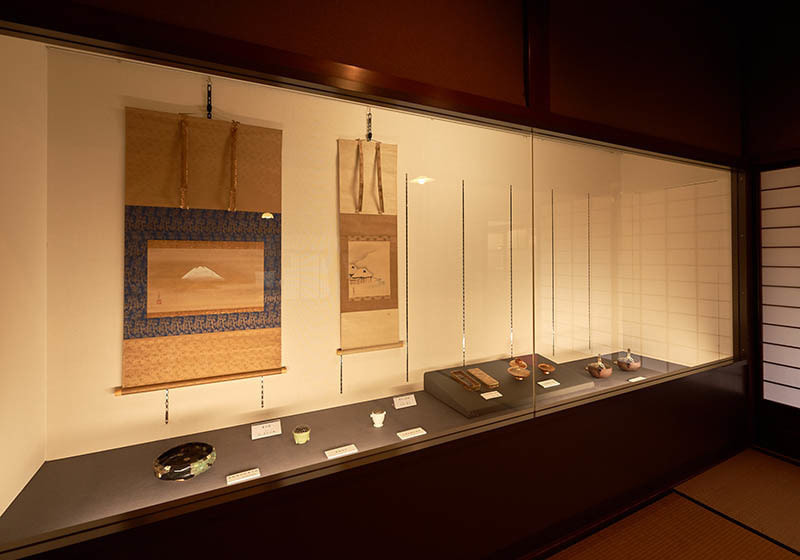
Culture carried by the Kitamaebune
The Kitamaebune sailors who set sail for the open ocean traveled the wide world and acquired a sense of beauty and deep knowledge. The Sakaya family has also collected artworks through the generations, some of which are displayed in the museum.
However, the heritage of the Kitamaebune is not limited to these tangible exhibits. The ships also played a role in the propagation and exchange of Japanese domestic culture, such as food, crafts, and folk songs, by carrying things and promoting exchange between people as well as between regions.
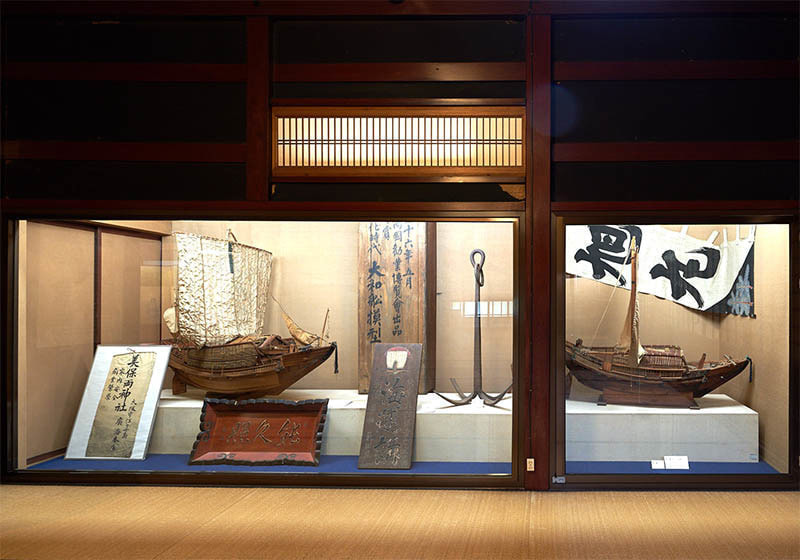
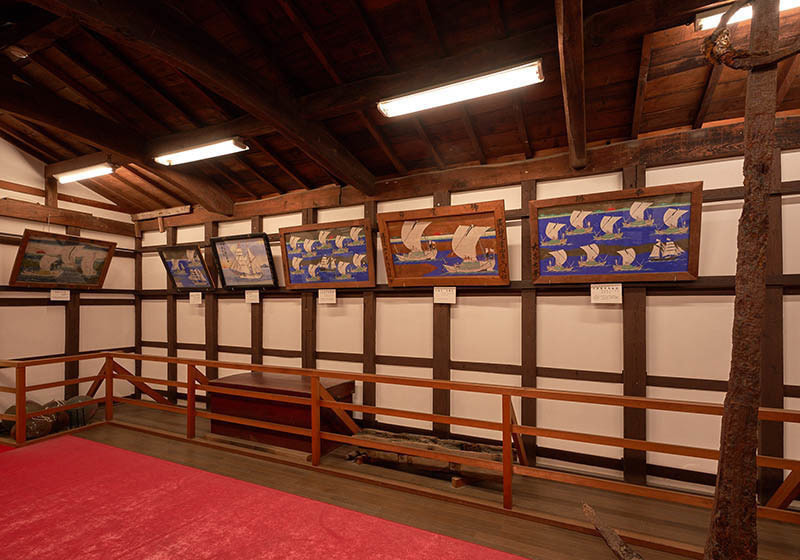
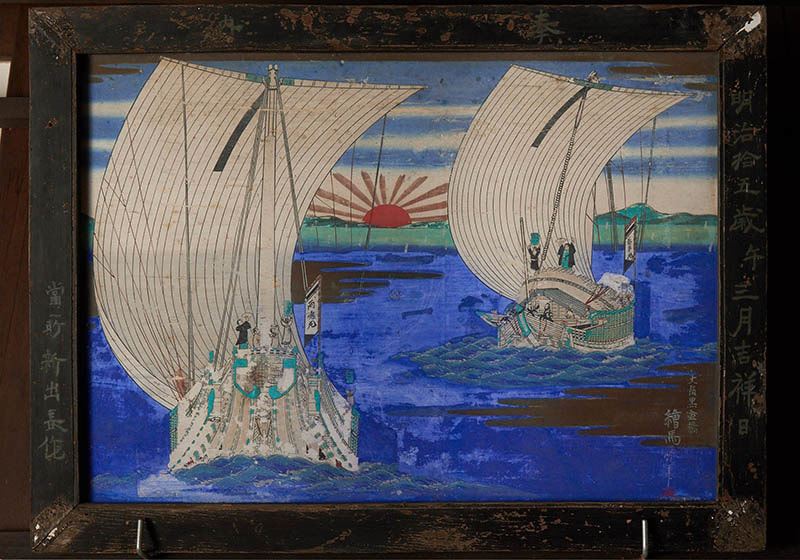
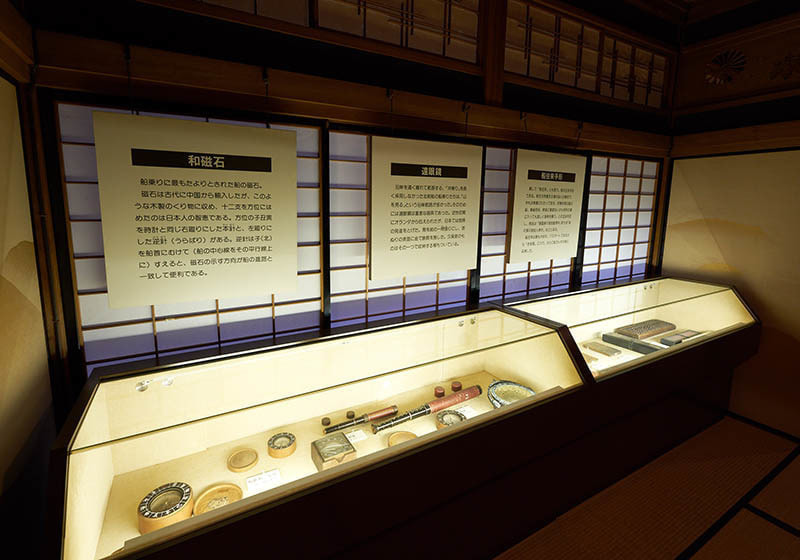
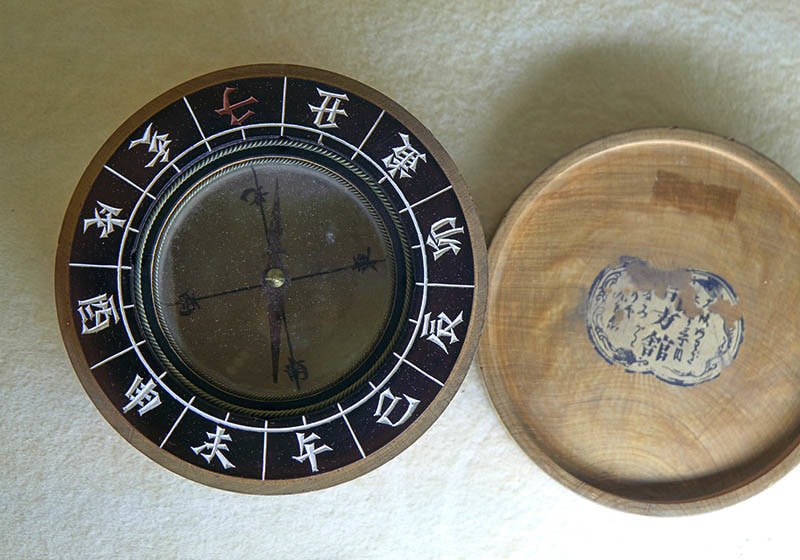
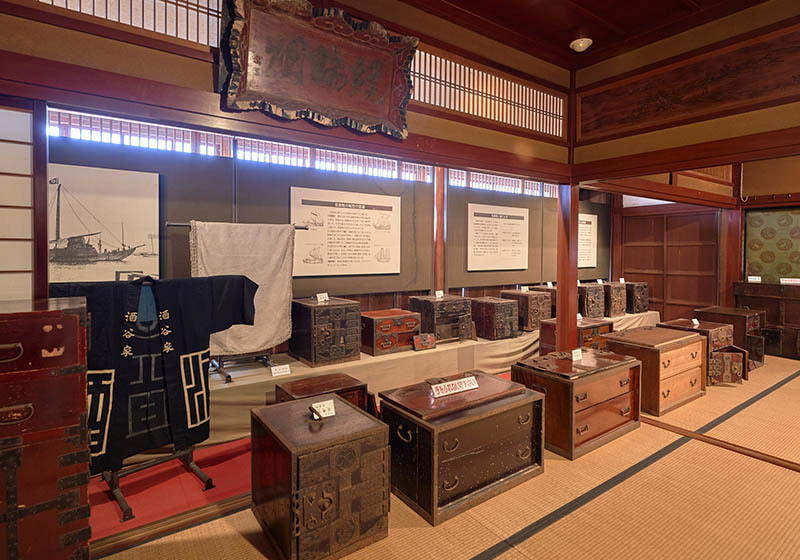
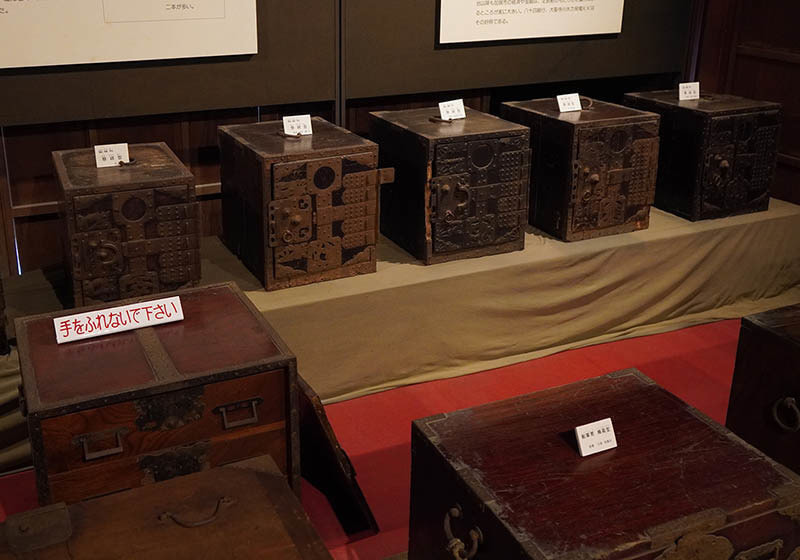
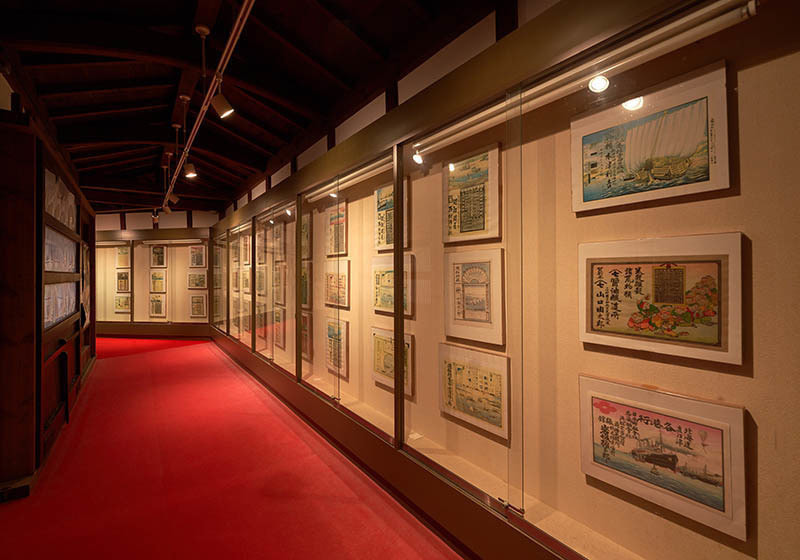
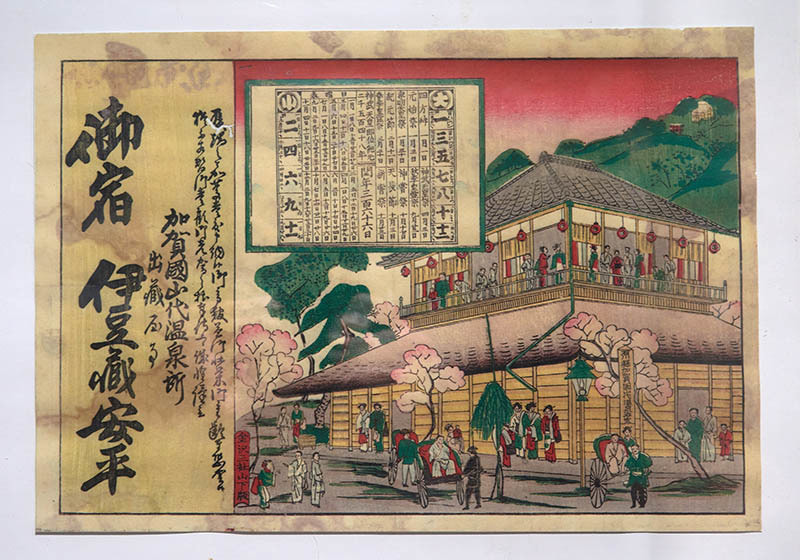
【Main exhibits】
Ship models
These were gifted by the shipwright to the shipowner whenever a new ship was built. Most are one-twentieth the size of the actual ship. They are extremely elaborately made and are also worth seeing as crafts.
In terms of the structure of the ship, wooden ships (Japanese ships) were developed uniquely in Japan and played an active role during the Edo period. Western-style ships were introduced later.
Funaema (wooden plaques)
Kitamaebune shipowners and sailors would offer a “Funaema” (wooden plaque with a picture of a ship) to the local shrine to pray for the safety of their sea voyage or show gratitude for having completed the voyage safely. They are also valuable in conveying the image of Japanese ships to the present day.
Japanese compasses
Marine compasses were developed uniquely in Japan by adapting compass technology from China. Kitamaebune ships would always sail with two or more Japanese compasses. Although there were nautical charts for the depth of straits and ports, and the presence or absence of reefs, these were all held in the sailor’s head.
Telescopes
Japanese telescopes were developed uniquely by imitating an item brought from the Netherlands. Fermented tannin juice from an unripe persimmon was applied to Japanese paper, which was then shaped into a tube, lacquered, and decorated with gold. Telescopes were important tools on the Kitamaebune ships, whose main role combined sailing the seas while keeping a watchful eye on the mountains, islands, and capes.
Chests of drawers for ships
These were used for storing valuables, such as documents, money, and stamps. In preparation for a marine accident, they were elaborately constructed to prevent water from coming in. Some have front doors that feature an openwork iron ornament with exquisite designs.
Hikifuda flyers
These were the equivalent of our modern-day advertising flyers. They were issued by wholesalers or shops based at the ports of call for the Kitamaebune ships and were sent to the shipowners, who were their regular customers. They attract people’s attention through their bold designs and distinctive colors.
【Main exhibits】

Ship models
These were gifted by the shipwright to the shipowner whenever a new ship was built. Most are one-twentieth the size of the actual ship. They are extremely elaborately made and are also worth seeing as crafts.
In terms of the structure of the ship, wooden ships (Japanese ships) were developed uniquely in Japan and played an active role during the Edo period. Western-style ships were introduced later.


Funaema (wooden plaques)
Kitamaebune shipowners and sailors would offer a “Funaema” (wooden plaque with a picture of a ship) to the local shrine to pray for the safety of their sea voyage or show gratitude for having completed the voyage safely. They are also valuable in conveying the image of Japanese ships to the present day.


Japanese compasses
Marine compasses were developed uniquely in Japan by adapting compass technology from China. Kitamaebune ships would always sail with two or more Japanese compasses. Although there were nautical charts for the depth of straits and ports, and the presence or absence of reefs, these were all held in the sailor’s head.
Telescopes
Japanese telescopes were developed uniquely by imitating an item brought from the Netherlands. Fermented tannin juice from an unripe persimmon was applied to Japanese paper, which was then shaped into a tube, lacquered, and decorated with gold. Telescopes were important tools on the Kitamaebune ships, whose main role combined sailing the seas while keeping a watchful eye on the mountains, islands, and capes.


Chests of drawers for ships
These were used for storing valuables, such as documents, money, and stamps. In preparation for a marine accident, they were elaborately constructed to prevent water from coming in. Some have front doors that feature an openwork iron ornament with exquisite designs.


Hikifuda flyers
These were the equivalent of our modern-day advertising flyers. They were issued by wholesalers or shops based at the ports of call for the Kitamaebune ships and were sent to the shipowners, who were their regular customers. They attract people’s attention through their bold designs and distinctive colors.


